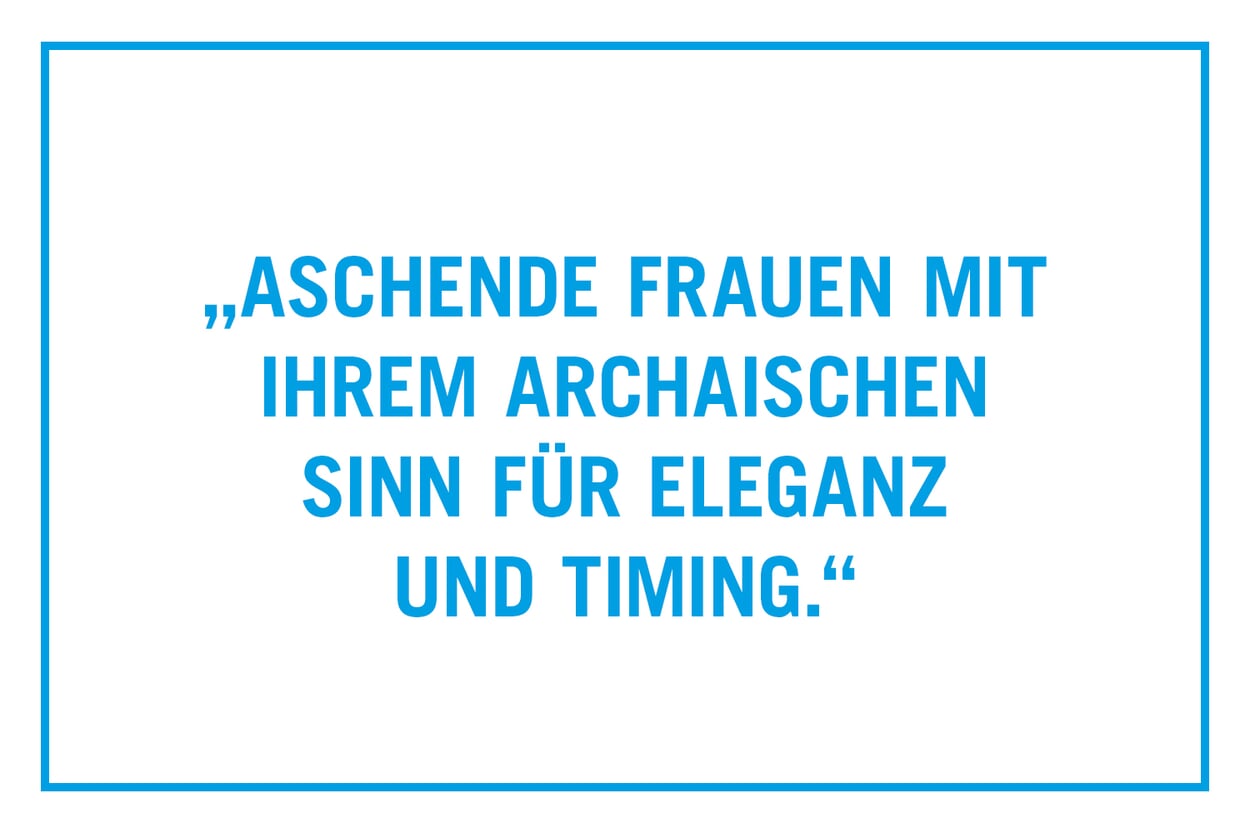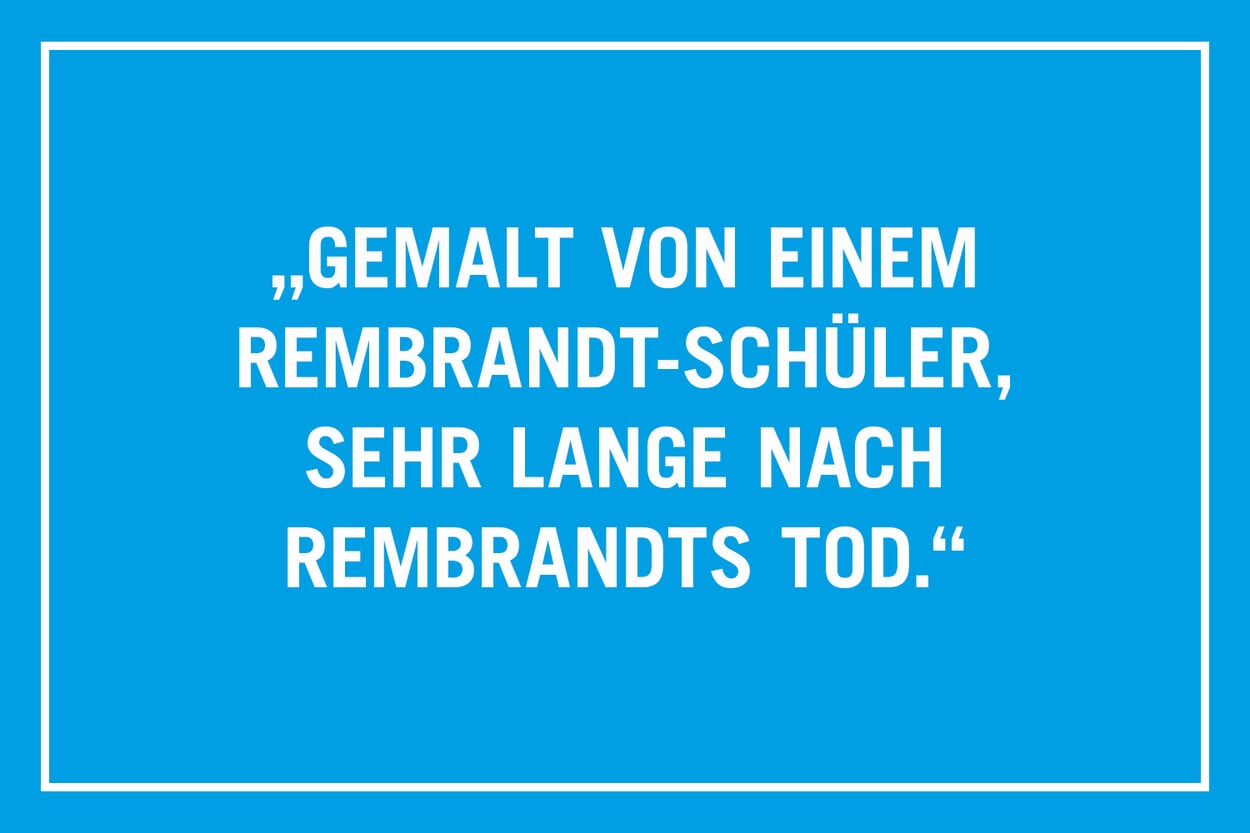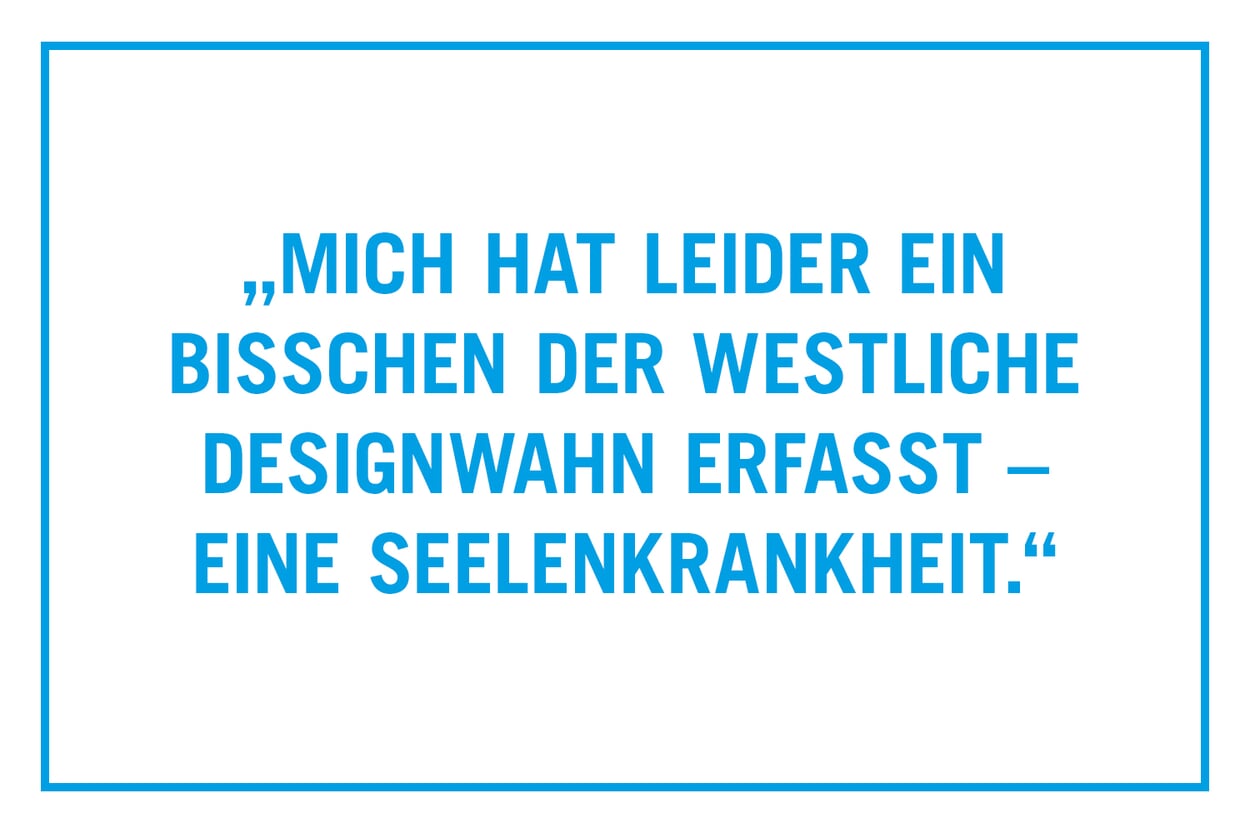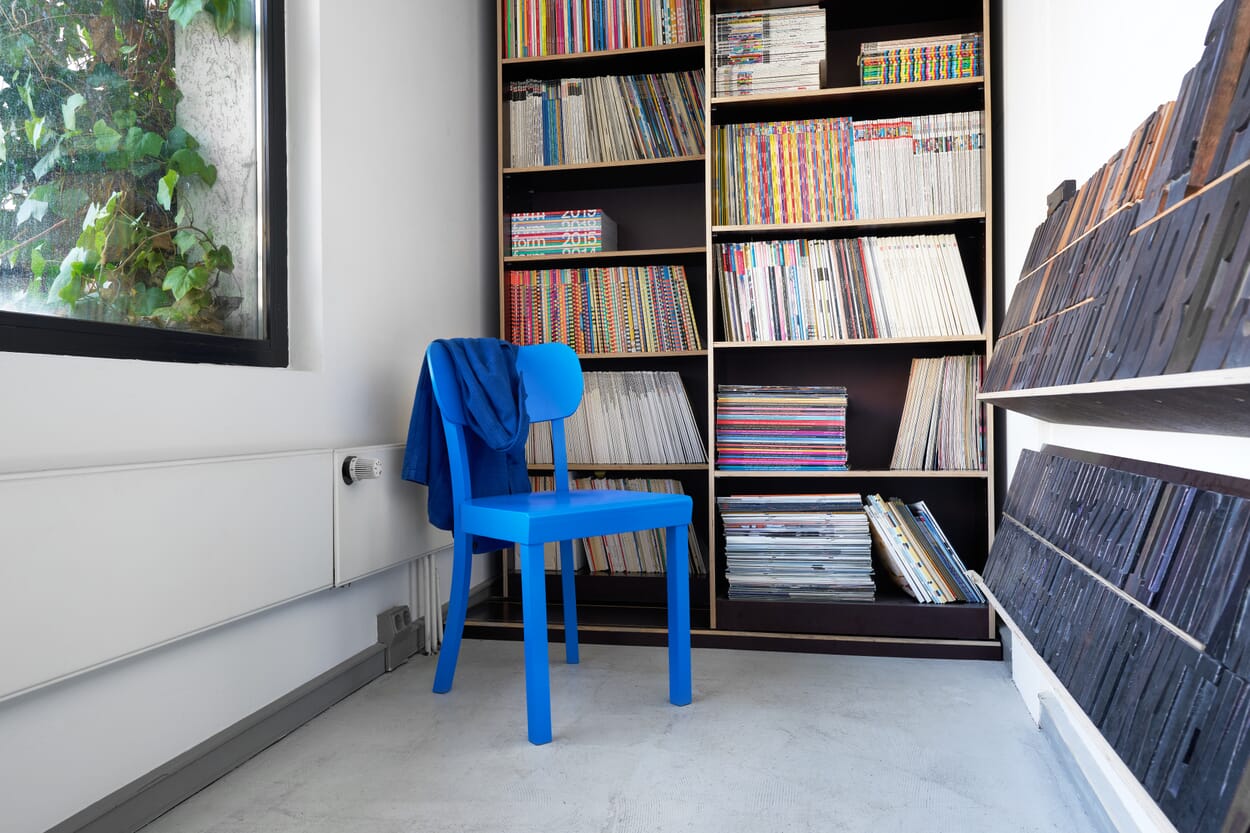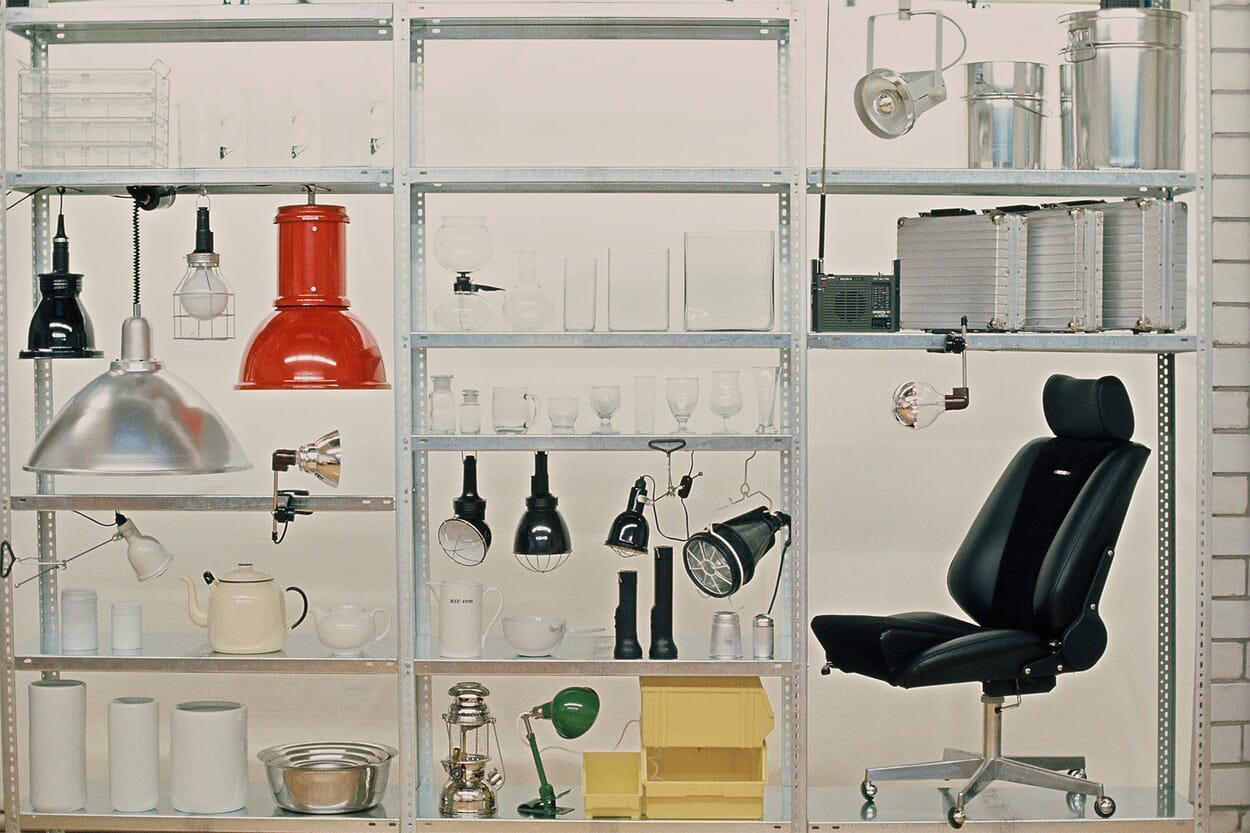DESIGN STORY(IES)
MEMORIES OF TOMORROW
MAXIM BILLER
When my father locked the door of our Prague apartment behind him in April 1971 and drove to the airport, he could have thrown away the key afterwards - because we never returned to Krkonošská 3. Everything we needed was already in Hamburg: comforters, books, a few icons to sell, crockery, cutlery. Everything we didn't need stayed in Prague forever. Imagine a four-room apartment on the top floor of an Art Nouveau building in Vinohrady near Rieger Park, where a relatively happy Prague intellectual family lived in the mid-1960s. Outside, the skirts are getting shorter and shorter, the music louder and louder, nobody is afraid of the communists and their bourgeois party anymore. And inside, life is getting better and better. It all started with a luxurious, almost Italian brass ashtray that my parents had discovered at the only old goods dealer in Prague that hadn't been nationalized after the Gottwald coup.
In the paradisiacal pre-war era, ashtrays like this had stood everywhere in train station waiting rooms and station bars, and suddenly there was one in our living room. That meant something, even we children noticed. While the adults discussed politics until 3 a.m. and sometimes gave each other extremely apolitical glances, they smoked in it very deliberately, the men hastily, cool, the women with their archaic sense of elegance and timing. It was only then that my mother - long over 30 - started smoking. And it was during this time that my parents began to spend their free time going to antique stores and asking acquaintances for old furniture they didn't need. Once they read an advertisement in "Vecerni Praha" and bought a honey-colored Biedermeier secretary from an old, friendly pharmacist in a Prague villa district. In the secretary's secret compartment, my mother discovered documents from the Nazi era that revealed that the pharmacist was a criminal whose pharmacy had belonged to Jews before the war. Of course, that made the secretary even more interesting.
After the secretary came the baroque sofa with the much too hard backrest, then came the art deco display cabinets in which my parents placed books instead of porcelain in the Russian style, then a huge dark brown oak table from the Masaryk era, then a radiant old rabbi, painted by a Rembrandt pupil long after Rembrandt's death - and finally came the Russians and 100 years of emigration.
In Hamburg, although we didn't have much money yet, we soon moved back into an Art Nouveau house near a park. And soon the apartment began to be filled with pictures and furniture similar to those in Prague, except that they were no longer quite as select. Some of it came from the bulky waste, a few pieces of furniture had been left by the previous tenants, such as the huge, ugly, sympathetic Kaiser Wilhelm sideboard that still stands in my parents' living room today, or the heavy dark brown desk from the Design Stone Age, at which my father still sits every day from morning to night doing his translations and looking the most peaceful. What's money if the atmosphere is right! We all felt very comfortable in the Hamburg apartment right from the start. It quickly had that typical Prague spring touch again, that something that comes about when you mix good and half-good antiques, Czech pop art pictures, old carpets and Jewish devotional objects, when things you surround yourself with mean more than "I saw them in the new AD". Hamburg was soon back to that nut-brown, beautiful and cozy mix, whose liberating, friendly atmosphere always has something to do with the fact that, as long as it's not about family issues, there isn't a single ideologue in this family, neither politically nor aesthetically. We buy what we like and put it in, lay it out, hang it up. Is that why people like us so much? Is that why they feel like they're in, say, a burlesque, philanthropic Jaroslav Hašek novel rather than an icy Peter Handke tale? I say "apartments" because my sister and I have lived in the same way for years. Of course, we didn't realize it the same way. She lives in London, I live in Berlin. But whenever I visit her, I say the same thing she says when she visits me: "It looks just like mom and dad's place!" Not quite, replies the other one, but somewhat.
Of course, there have long been a few English corners in her home - I wonder, for example, whether her desk is Early or High Victorian or just from the flea market in Notting Hill Gate - but the rest is totally Hamburg and Prague, with books, pictures, lamps and armchairs everywhere, among which you can immediately imagine my young parents smoking, discussing and flirting in their best Prague days. Unfortunately, I was caught up in a bit of a Western design mania, a disease of the soul, the causes of which I still don't really understand. Why do I love furniture from the golden, peaceful days of the West as much as other people love art or literature? What do stools by Alvar Aalto, lamps by Joe Colombo, tables and chairs by Jean Prouvé and Tapio Wirkkala mean to me that I can't actually afford? Now I understand: I feel as good, beautiful and progressive among them as the famous designers of the second half of the 20th century must have felt when they created them. And then there's the time machine effect! As soon as I sit in my ludicrously beautiful Butterfly Chair by Pierre Paulin or on the beige-brown checkered folding armchair by Takeshi Nii, I fly back to Krkonošská 3. It's all a bit brighter and snootier than my mom and dad's - but in the end it's still our bohemian nut-brown-beautiful-cozy mix. We live as we lived. That's what I wanted to say. And if our luck doesn't run out, we always live so well that the things we surround ourselves with are already the beautiful memories of tomorrow. Do you understand what I mean? I have a huge ink drawing by Richard Fremund hanging in my living room. Fremund was one of the best Czech painters for a few years. He started out in the cold 50s as a Matisse admirer, continued as a Lichtenstein alter ego and ended up as a confused folklorist. The woman's head in my living room is from the good old days. He painted it live on stage during a performance at the Semafor Theater. It shows - pop art at its best - one of Henry VIII's six wives, whose beauty and cheekiness are the subject of the play. The painting is large, poetic, soft, expressive. I've known it since I was a boy in Prague. It hung there first, then in Hamburg, and when I moved away from home, my mother gave it to me. She had managed to save it during our escape from Krkonošská by taking it out of the frame at the last second, rolling it up, pulling a rubber band out of my hair, sliding it over it and then throwing the roll next to me on the back seat of our Fiat 500. If one day I had to leave very quickly and lock the door of my apartment behind me forever, I would only take this picture with me, nothing else. Maxim Biller, born in 1960, comes from Czechoslovakia and emigrated to Germany with his parents and sister in 1970. The writer and journalist currently writes the column "Über den Linden" for DIE ZEIT. His most recent publications include the short story collection "Sieben Versuche zu lieben" (Seven attempts to love) published by Kiepenheuer & Witsch and the essay collection "Wer nichts glaubt, schreibt" (Who believes nothing, writes) published by Reclam. This text was published in the MAGAZIN catalog 2009 and is an excerpt from the book "50 Jahre 50 Produkte - Designgeschichte(n) erzählt von MAGAZIN", which will be published in spring.
MAGAZIN1971
The book for MAGAZIN! 50 years of MAGAZIN encourages a special look at themes and products, stories and current affairs. Founded in Stuttgart in 1971, MAGAZIN has experienced and written history. Companions and contemporaries, product designers, customers and lovers of the brand have their say on what has happened. A collection of essays, e.g. by Sibylle Berg on "Schöner Wohnen" and Maxim Biller on "Erinnerungen von Morgen", meets contemporary topics on product design, design and furnishing. Supplemented by a special look at 50 exemplary products from the history of MAGAZIN. Including the popular and the little-seen, highlights and the inconspicuous, the favorite products of MAGAZINS and their background stories. 21x25 cm, 248 pages with many b/w and color illustrations, bound in fine linen Duchesse. Now available.
DISCOVER MORE
We are celebrating 50 years of enthusiasm for our products and selected range. Look forward to glimpses into our digital and analog shop windows.
In Stuttgart, 50 years ago, MAGAZIN was born. A store, an idea, a program formed an innovative company with stubbornness and perseverance.

